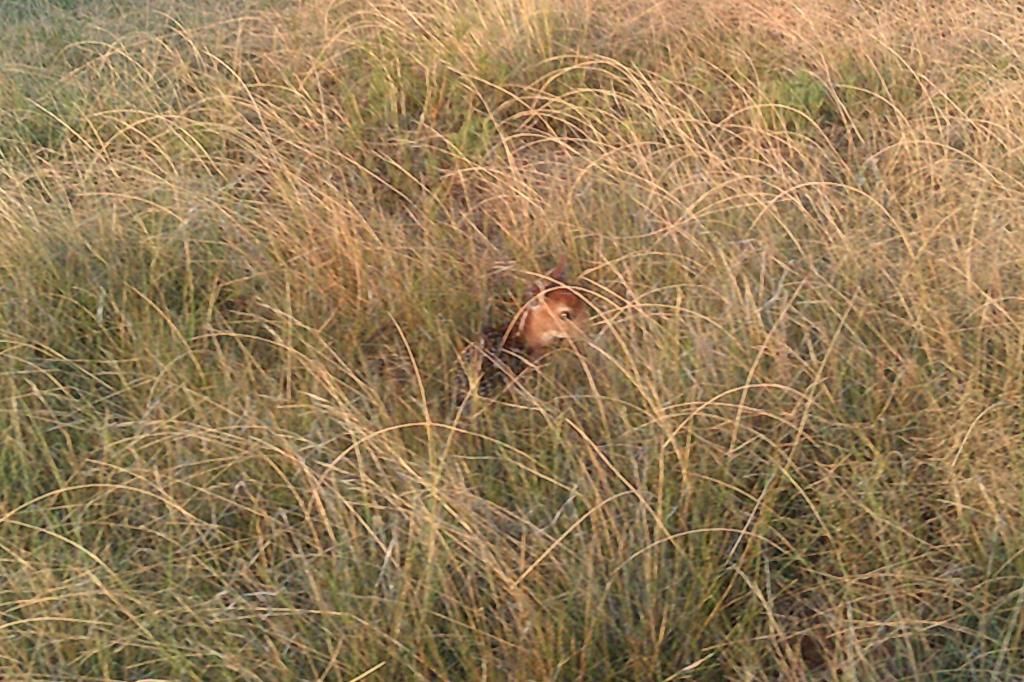17 August 2014, 01:51
CrazyhorseconsultingFrom misses to mistakes. The complete story.
Might help if I posted the whole story.
While out checking on a buffalo cow with a new calf I chanced on to this little critter. When I first saw it things almost turned into a disaster. It was getting close to sundown, and I was driving west on one of the pasture roads. I caught movement out of the corner of my eye and stopped the pick up. As I was getting stopped I saw something drop down into the grass. I figured it was either a young coyote or a bobcat. I have seen both of those behave in a similar fashion.
From where I was stopped to where the critter went to ground at was about 60 yards or so. I got my .35 whelen out of the pick up and stood watching the spot for several minutes. Every so often I thought I saw movement in the grass but nothing I could get a clear view of thru the scope. I even got out my varmint call and called a couple of times but nothing moved.
At this point I decided to see if I could spook whatever it was and maybe get a shot before it took off. What wind there was, was coming out of the south east so I was able to circle out and come in on the upwind side of where whatever it was, was hid.
Turned out to be a good strategy, because when I got closer I saw how big a mistake I almost made. After figuring out what it was I eased back to the pick up and got the camera and took this picture. I figure the little thing was only a week to 10 days old.

17 August 2014, 18:18
CrazyhorseconsultingHere is the answer to that exact question on another site I participate on. It is all just my personal theory, nothing more.
quote:
Not all that common, but not that unusual either and not just for this area. Over the past few years there seems to have been an increase across the state of fawns being born outside of the normal time frame.
Personally in my travels I have seen spotted fawns as late as October and early as mid February. I have seen a few pictures others have taken of fawns as late as mid December. I have also saw 3 or 4 incidences of bucks with hardened antlers in mid June to early July chasing does.
My own personal theory that I developed several years back is that white tails are undergoing a gradual evolutionary change as far as reproduction is concerned.
I have no actual proof but I believe that white tails are evolving along the lines of Axis deer, in that at some point in the future, white tails will breed and produce fawns year round. Reports pop up of fawns outside of the normal time frame, bucks with hardened antlers and bucks chasing does outside of what has been normal.
I have no actual proof nor have I ran across any studies or field reports from professional biologists on the topic so the incidents I have seen or heard about may be or are just anomalies.
I do believe that the way white tails are being managed, free ranging populations in areas where there is a lot of supplemental feeding of protein and habitat manipulation, i.e, food plots/water sources/sanctuary pockets along with selective harvest practices are and have allowed over all numbers state wide at least in Texas to reach artificially high numbers.
From an evolutionary standpoint the importance of having young at a point when the vegetative growing season is at or approaching optimum production of new/fresh growth may be or has became less, so the species may be slowly adapting to take advantage of the changes within its environment.
Like I say, it is just a theory.
17 August 2014, 22:14
Topgun 30-06Those are some interesting theories! I'll blame it all on Al Gore and the global warming theory, LOL!
21 August 2014, 04:55
matt salmYears ago I was hunting here in WI on opening day of the gun deer season (week of thanksgiving every year) and had a tiny fawn wander by. It had it's spots and weighed 20 lbs if it was lucky. Looked like a lost cause for it though as we already had a dusting of snow and it was in the low 20's at the time. Positive that one didn't make it too much longer.
